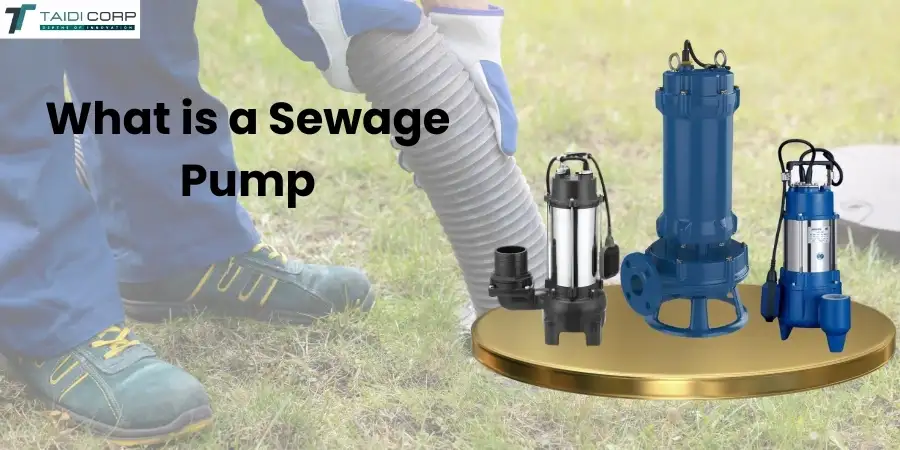
Introduction
If your home has a basement bathroom or sits in a low-lying area, you’ve likely heard of a sewage pump. But what exactly is it, and why is it essential for efficient waste management? A sewage pump is a vital tool that moves wastewater and solids from lower to higher elevations, ensuring your plumbing system operates smoothly. Whether you’re a homeowner, property manager, or DIY enthusiast, understanding how a sewage pump works is crucial for maintaining a functional and flood-free property.
In this article, we’ll explain the importance of sewage pumps, how they work, and provide tips on maintenance. We’ll also help you decide when it’s time to call a professional for installation or repairs.
What is a Sewage Pump?
A sewage pump is a device that transports wastewater and solid materials from one location to another, typically from lower to higher ground. It’s often used in homes with basements or below-ground bathrooms, ensuring wastewater flows out into the sewer system or septic tank. In essence, the pump prevents sewage backups and floods in areas where gravity can’t do the job.
Why Are Sewage Pumps Important?
Prevent Flooding and Backups
Imagine the unpleasant scenario of wastewater backing up into your basement. Not only is this a hygiene hazard, but it can also cause expensive water damage. A sewage pump prevents this by pushing waste from low-lying areas to higher ground, into the main sewage line.
Efficient Waste Management
Sewage pumps are essential for managing waste in residential, commercial, and industrial settings. By efficiently moving wastewater, these pumps play a critical role in keeping homes and businesses clean and safe, especially in buildings with bathrooms below the sewer line.
Types of Sewage Pumps
There are several types of sewage pumps designed for different purposes, each with unique features and functionalities. Understanding the differences will help you choose the right pump for your needs.
Submersible Sewage Pumps
Submersible sewage pumps are designed to work while fully submerged in water. These pumps are typically used in residential settings, handling large volumes of sewage efficiently and quietly. They’re well-suited for homes with basements or below-ground sewage systems.
Effluent Pumps
Effluent pumps are designed for smaller solids and are often used for greywater, which includes water from sinks, showers, and laundry machines. These pumps are common in residential septic systems and can help ensure that partially treated wastewater is moved to a drain field or disposal site.
Grinder Pumps
A grinder pump is ideal for systems that require higher pressure. These pumps grind solid waste into a slurry, making it easier to move through smaller pipes. They’re perfect for homes or businesses in areas where the main sewer line is far or uphill.
Sewage Ejector Pumps
A sewage ejector pump is specifically designed for moving waste from below-ground bathrooms to the main sewage line. If you have a bathroom in the basement, you’re likely using an ejector pump to ensure proper wastewater removal.
How Does a Sewage Pump Work?
Components of a Sewage Pump
The core components of a typical sewage pump include:
- Motor: Powers the pump to move waste.
- Impeller: Creates pressure to push waste through the discharge pipe.
- Float Switch: Detects rising water levels and activates the pump.
- Discharge Pipe: Carries wastewater to a septic tank or sewer line.
Working Mechanism
- Wastewater enters the pump basin: Waste from your home or property flows into a basin or pit.
- The float switch activates the motor: When the water level in the basin rises to a certain point, the float switch triggers the motor to start.
- The impeller rotates: The impeller spins, creating pressure that forces wastewater through the discharge pipe.
- Waste is transported to the main sewer line or septic system: The pump moves wastewater to its final destination, preventing backups and flooding.
Safety Features
Most sewage pumps come with safety features like alarms that alert you when water levels are too high and backflow prevention valves that keep wastewater from re-entering your home.
Common Applications of Sewage Pumps
Residential Use
Sewage pumps are a must-have in homes with basements, below-ground bathrooms, or septic systems. They ensure that wastewater is efficiently removed, keeping your home free of backups and floods.
Commercial and Industrial Use
In large buildings, factories, and industrial sites, sewage pumps handle complex wastewater management needs. They ensure the smooth flow of waste in facilities with multiple bathrooms, high waste output, or extensive plumbing systems.
Sewage Pump Maintenance
Maintaining your sewage pump ensures longevity and prevents costly repairs. Here are some essential maintenance tips:
- Regular Inspections: Check your pump for wear and tear, especially on the float switch and impeller.
- Clean the Pump and Basin: Periodically clean out the pump and its surrounding basin to prevent clogs.
- Replace the Float Switch: If your pump isn’t activating, the float switch may need to be adjusted or replaced.
Troubleshooting Common Issues
Pump Not Activating
If your pump isn’t turning on, check the float switch and electrical connections. A faulty switch or wiring could be the culprit.
Pump Running But Not Emptying
This could indicate a blockage in the impeller or discharge line. Check for clogs and clean out any debris.
Frequent Cycling
If your pump turns on and off frequently, adjust the float switch height or check for leaks in the basin.
When to Replace a Sewage Pump?
Knowing when to replace your sewage pump can save you from a plumbing disaster. Here are some signs it might be time for a new pump:
- Age: Most pumps last 7-10 years. If yours is older, it might be time for a replacement.
- Frequent Breakdowns: If you’re constantly repairing your pump, a new one might be more cost-effective.
- Persistent Operational Issues: If your pump has ongoing issues despite troubleshooting, it could be time for an upgrade.
Conclusion
A sewage pump is a critical component of any property with a basement or below-ground bathroom. Understanding how it works and maintaining it properly can save you from costly repairs and unpleasant sewage backups. Whether you’re a homeowner or property manager, ensuring your pump is functioning properly is key to efficient waste management.
Regular inspections and professional maintenance can extend the life of your pump, so don’t hesitate to consult a professional plumber for help with installation or repairs. For more information on choosing the right sewage pump, check out our full range of products at Taidicorp.
